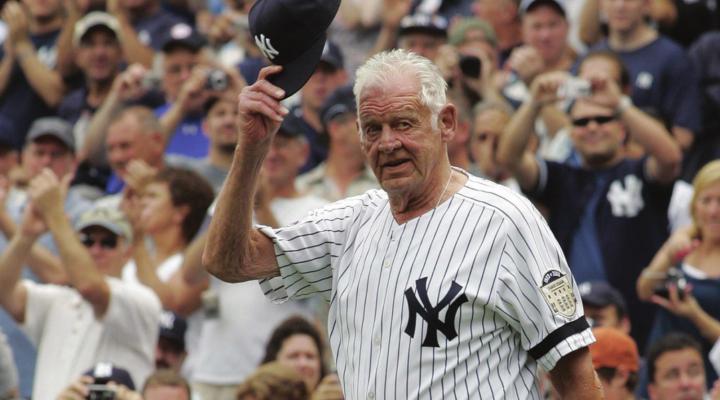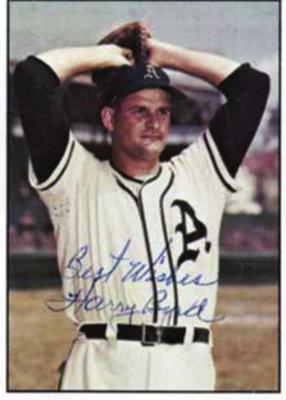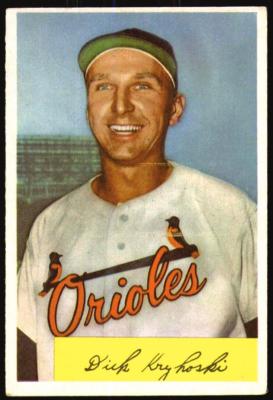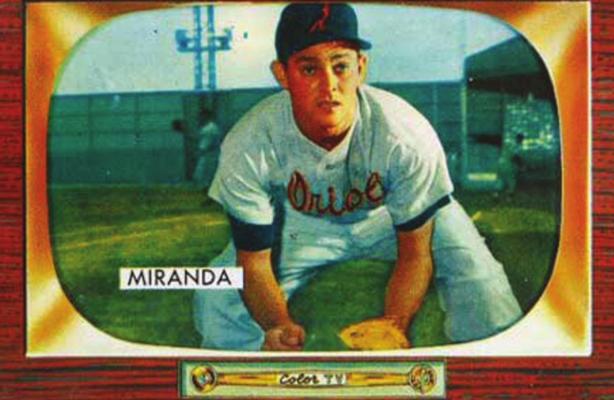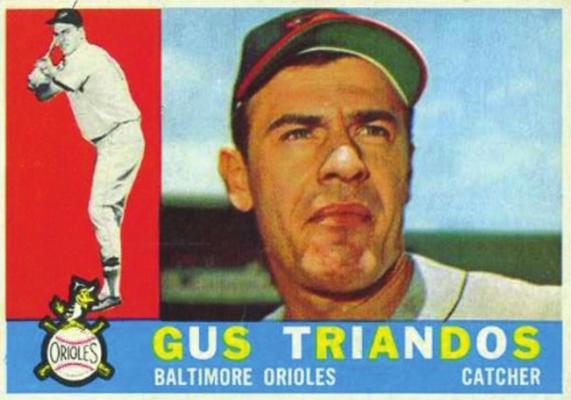Hot Stove League trade involved 17 players
When I was much younger, this part of the year was known as “Hot Stove League” time for Major League Baseball fans. I never knew for sure why it was called that until an older gentleman (he was undoubtedly younger than I am today) explained it to me and anyone else who would listen.
I was in high school and the older gentleman was a man everyone called “Ol’ Arn”. He hung out in the principal gathering spot for this little town of about 220 persons. A number of my friends and I would spend time playing 10-point pitch in that hangout. Ol’ Arn and another elderly gentleman were discussing some sports topics and the issue of “Hot Stove League” came up. “What is the “Hot Stove League?” someone asked.
Arn said that it was what the off-season for baseball was called. In the old days, he explained, baseball fans used to gather in grocery stores, elevators, pool halls, etc., and they would talk about their favorite baseball teams and players. This was the time when folks would offer their opinions on why the past season ended the way it did and speculate what the next season would be like. The term “hot stove” came from the reality that most of these gathering places had a heating stove located in the center of a big room and those participating in the debate would gather around the stove for warmth.
Arn pointed out that the offseason was a good time for trades to be made and there would be speculation about which players would be traded from one team to another. This was a good time for fans to make up trades of their own, arguing about whether or not such a trade would be a good one for the teams involved.
This information inspired me and a couple of my friends to come up with trades that we would like to see happen. Our trades weren’t likely to be made by real Major League Baseball general managers, because they usually were designed to disproportionately favor our favorite teams. For example, I really wanted Mickey Mantle and Yogi Berra on my favorite team, the Kansas City Athletics. And I was likely to give the Yankees players like Joe DeMastri and Lou Klimchock in return.
The discussion about trades made during the hot stove league period got me to remembering what is still the biggest trade ever made in Major League Baseball. It was made after the 1954 season and was between the New York Yankees and the Baltimore Orioles involving 17 players. The Orioles sent Billy Hunter, Mike Blyzka, Darrell Johnson, Jim Fridley, Dick Kryhoski, Don Larsen and Bob Turley to the Yankees in exchange for Jim McDonald, Willy Miranda, Hal Smith, Gene Woodling, Bill Miller, Kal Segrist, Don Leppert, Theodore Del Guercio, Gus Triandos and Harry Byrd.
Of all those players, the Yankees probably benefited the most from getting the services of Turley and Larsen. Larsen, of course, had a pretty decent career as a Yankee and went down in history by pitching a perfect game in the 1956 World Series. Turley lasted with the Yankees until 1962 giving them a solid starting pitcher over those years. He was the World Series Most Valuable Player in 1958 as the Yankees defeated the Milwaukee Braves in seven games.
I loved the fact that Woodling was going to the Orioles. He was one of my favorite Yankees in 1954 and since I had liked the Orioles when they were in St. Louis as the Browns. I still was somewhat partial to Baltimore. He played in only 47 games for the Orioles in 1955 before being traded to Cleveland. But he came back to Baltimore in 1958 and had three pretty good years there. Woodling was a good hitter almost always hitting around the .300 mark.
Besides Woodling, the best players Baltimore came up with in the trade with the Yankees were Triandos and Harry Byrd. Triandos was a home run hitting catcher who played eight years for the Orioles. He hit 30 home runs in 1958 with 79 RBIs. His batting average that year was a respectable, but not great .245. Byrd was a big name at the time of the trade having been the American League Rookie of the Year in 1952 with the Philadelphia Athletics, posting a 15-15 winloss record. The next season he lost 20 games while winning only 11 and was traded to the Yankees. Byrd had a decent year with the Yankees winning 9 and losing 7 with a 2.99 earned run average. The Orioles thought they were getting a potential ace for their pitching staff, but he was traded midseason to the Chicago White Sox in 1955. Byrd never did regain the prominence he had had with Philadelphia and the Yankees.
Looking at some of the other players in the big Yankee-Oriole trade my eyes quickly go to the name of Dick Kryhoski. Kryhoski had been a member of the St. Louis Browns and I had his baseball card making him an automatic favorite of mine. Kryhoski was a big first baseman, (now I see he was 6-foot- 3, 185 pounds) who had started his career in 1949 with the Yankees. He then went to the Detroit Tigers and then to the Browns in 1952. In his last season in St. Louis he hit 16 home runs, drove in 50 and had a batting average of .278. In Baltimore in 1954, his home run production dipped to one, making him expendable when the Yankees trade came up. He never played for the Yankees, who immediately shipped him to the KC A’s where he played only in 28 games.
Another name that caught my eye was Willie Miranda. Miranda was another player that became important to me because I had his baseball card. Before the big trade, he had a spotty career bouncing around from Washington to the White Sox, to the Browns and back to the White Sox. He was sent from the White Sox back to the Browns and then to the Yankees, where he played in 1954. He found a home in Baltimore and retired there after the 1959 season. Before the trade, he had never played in as many as 100 games in a season, but he became a regular as an Oriole. A slick-fielding shortstop, his best year with a bat in his hands was 1955 when he hit .255. After that his average hovered around the .200 mark.
I remember Hal Smith, partly because there were two players by that name. There was a Hal Smith who was a catcher for the St. Louis Cardinals from 1956 to 1961. Then there was the Hal Smith who was part of the blockbuster deal between the Yankees and Orioles. The latter Hal Smith became a favorite of mine because he eventually played for the Kansas City A’s. He had never been in a Major League game before the trade, but had a good year his first year in Baltimore. In the middle of the 1956 season he was traded to Kansas City, where he played through 1959. He played third base, but mostly was a catcher. Being a good right hand batter, he usually was platooned, playing in games where the opposition started a left-handed pitcher. In 1960, he was traded to the Pittsburgh Pirates, where he was a part of the Miracle Pirates who won the 1960 World Series. Everyone talks about the walk-off home run hit by Bill Mazeroski to win that Series. But often forgotten is a home run hit earlier in the game by Smith. The Pirates were trailing 7-6 in the bottom of the eighth when Smith came to bat with Dick Groat and Roberto Clemente on the bases. Smith hit a home run to give his team a 9-7 lead. It was thought at the time that Smith’s home run might be the blow to give the Pirates the World Series, but the Yankees tied the score in the top of the ninth, setting things up for Mazeroski to be the hero with his home run. Smith closed out his career with the Houston Astros.
There were a bunch of the players in that big trade of whom I’d never heard. Players like Mike Blyzka, Jim Fridley, Bill Miller, Kal Segrist and Theodore Del Guercio. Looking them up, I see that Blyzka played in two seasons for the Browns and Orioles, but never played after the trade; Fridley played only one year after the trade (1958 with Cincinnati); Miller was sent down to the minors five games into the 1955 season; Segrist had a lifetime batting average of .125 and 1955 was his final year; and Del Guercio was sent down to the Yankees farm club in Columbus, Ohio. He never played in the Majors.
Well, I guess I’ve just participated in a “Hot Stove League” discussion. Looking to the past is always my favorite kind.

